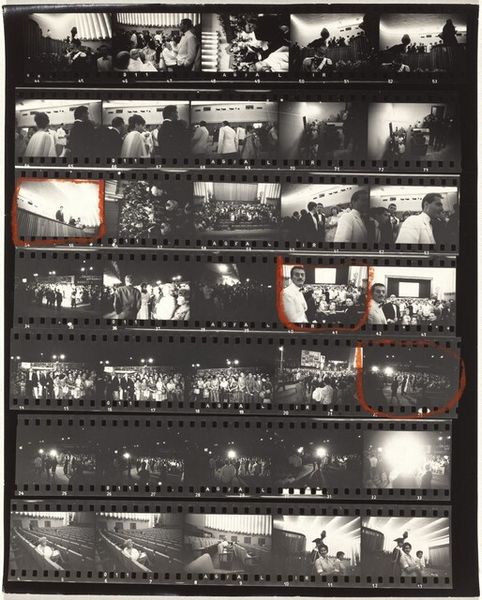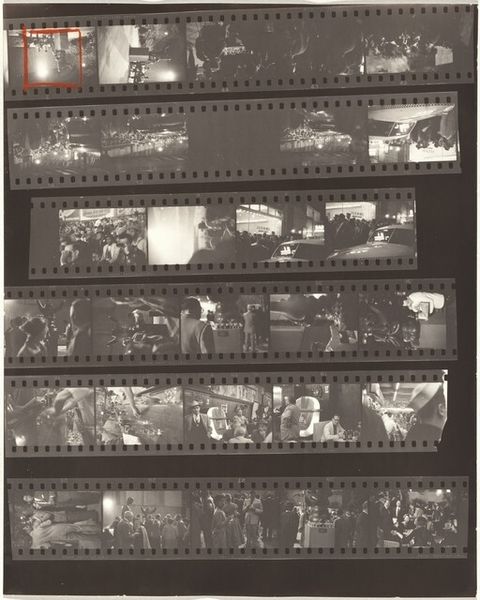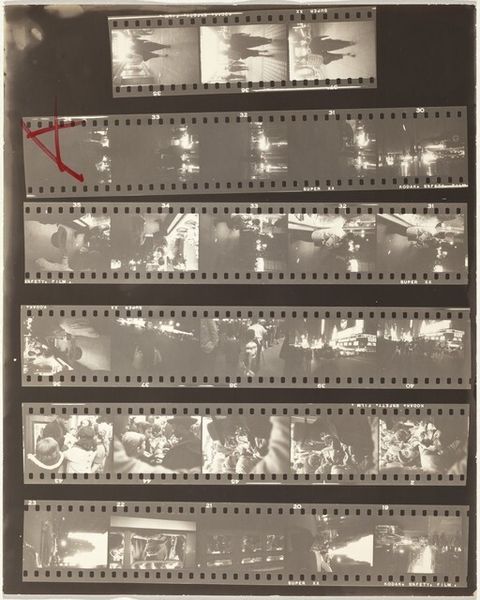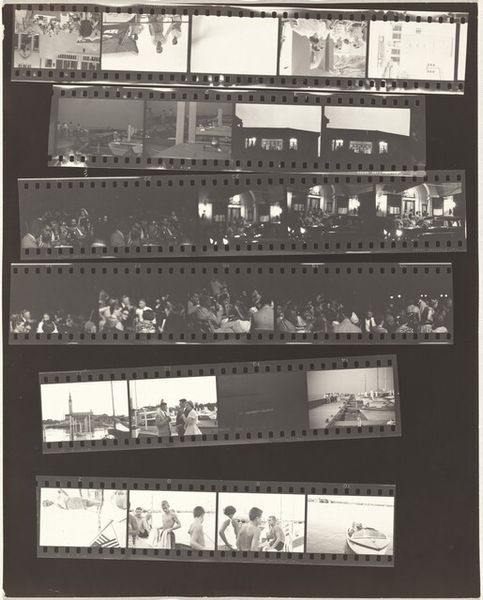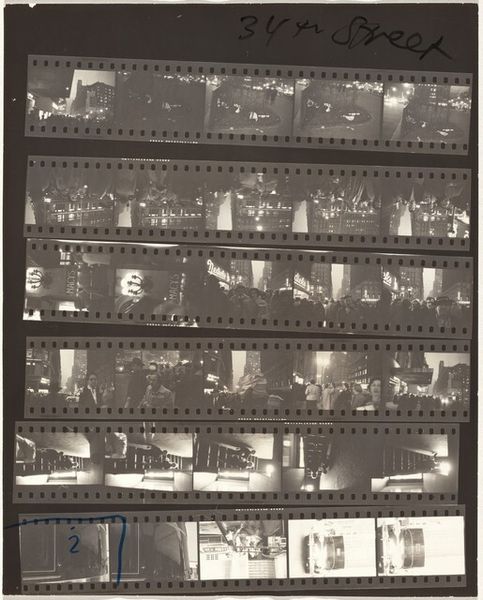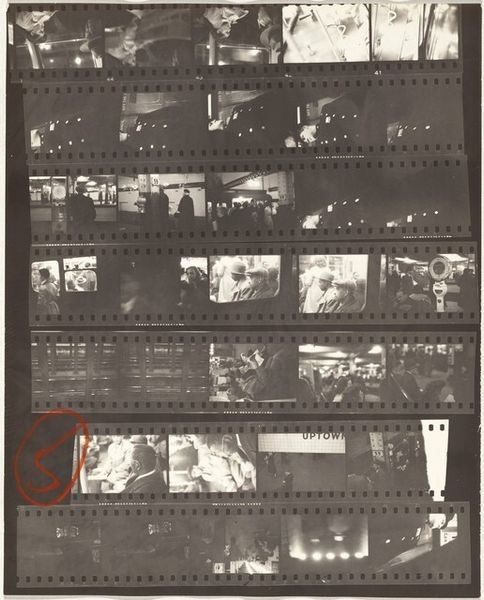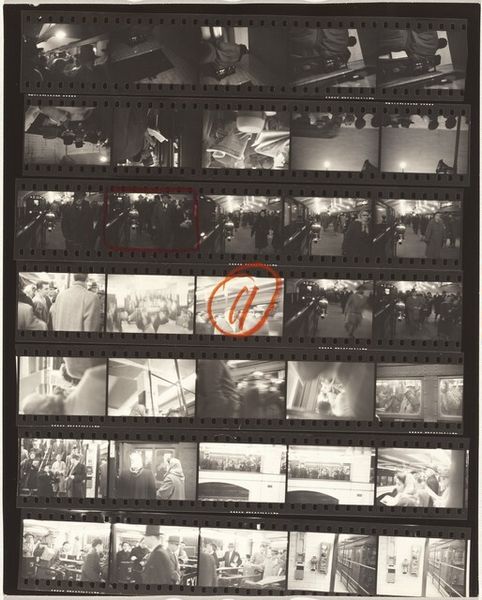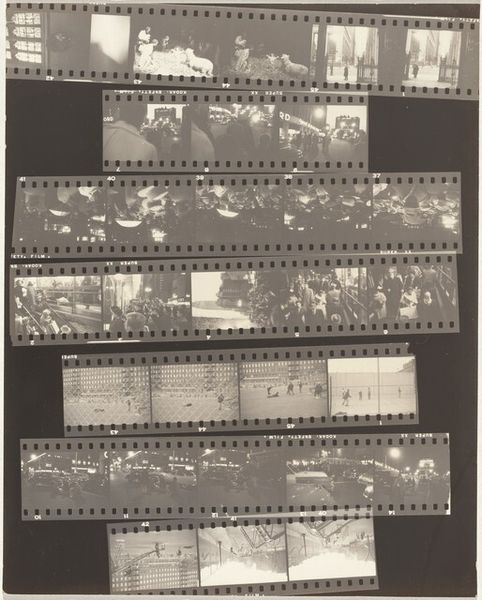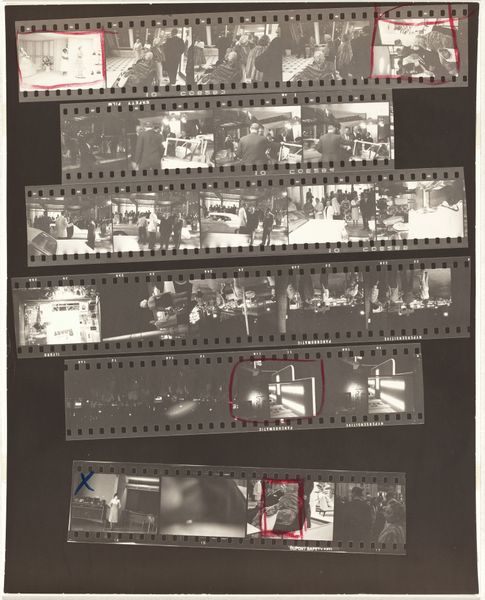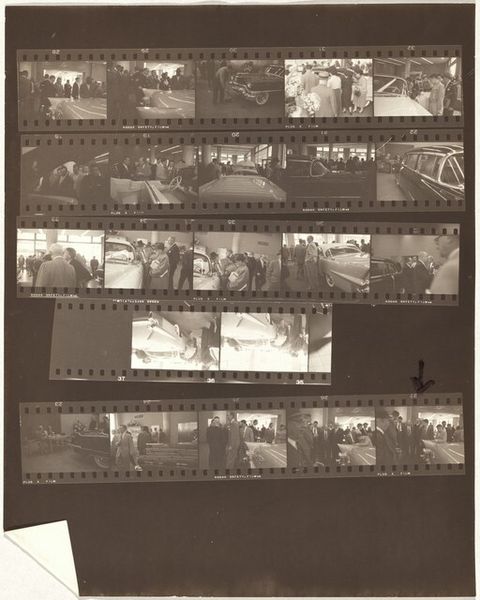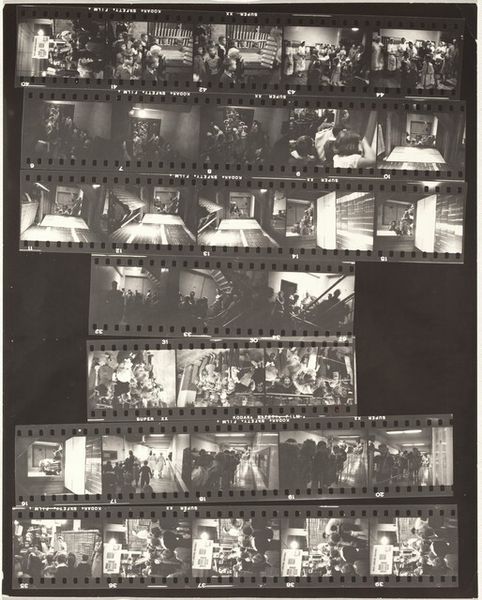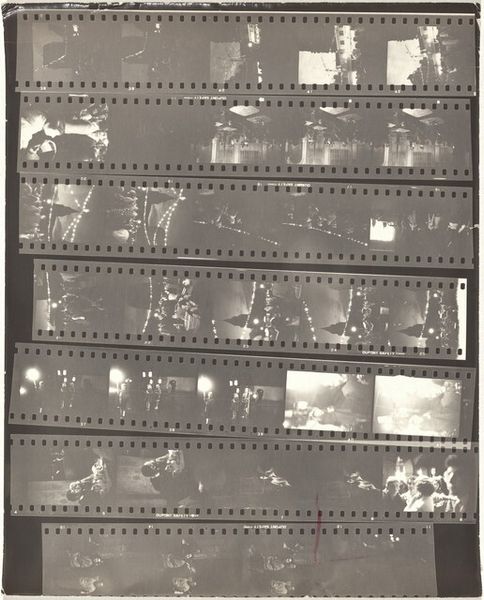
photography, gelatin-silver-print
#
film photography
#
archive photography
#
street-photography
#
photography
#
historical photography
#
historical fashion
#
gelatin-silver-print
#
modernism
Dimensions: overall: 20.1 x 25.2 cm (7 15/16 x 9 15/16 in.)
Copyright: National Gallery of Art: CC0 1.0
Curator: This is Robert Frank's "Paris 4B," a gelatin-silver print dating from 1951-1952. It shows multiple strips of film negatives. Editor: It's like peeking into a photographer’s thought process, isn't it? I immediately pick up a kind of fractured narrative quality, a visual stream-of-consciousness effect. Curator: Precisely! Frank's hand is all over this. You see the numbering, the selection – it is very deliberate. This arrangement reveals his working process. How the final, iconic images came to be is shaped as much by the editing as it is by the shooting. And notice the sprocket holes on the film, they are almost like a rhythm or a measuring stick. Editor: Rhythm is spot on. The repetition of shapes in the film itself – those little holes and dark bars – feels almost like a code. Some images stand out, of course, drawing your attention – is that a Magen David I see, in the street views? Its cultural weight vibrates strongly here. Curator: It does. The religious and political climate after World War II definitely echoes throughout his European work. Consider also the physicality of gelatin silver prints themselves. Mass production techniques and darkroom magic create tangible objects but also the aesthetic choices which the artist undertakes. Editor: Seeing that star makes me think of the cultural memory embedded in these urban scenes. The people, the architecture, the light—they all contribute to a sense of time and place. Paris, but through the eyes of someone carrying history with them. Even those candid street scenes have echoes within them. Curator: And Frank would have had to handle these negatives, make choices under a darkroom's dim red glow. It brings back the humanity and the individual’s labor into something we now see digitized or instantly reproduced. Editor: Exactly. And these strips become almost like fragmented memories, the way a place can feel years later. Thanks to seeing all these symbolic bits and pieces here, one gets a better grasp on this time gone by and this person reflecting it, not to mention the power in just a little frame. Curator: Thank you for highlighting that; looking through an artist's unused materials can highlight their process. Editor: Likewise, your pointing out the materiality allows us to dive more into cultural references to enhance visual narratives.
Comments
No comments
Be the first to comment and join the conversation on the ultimate creative platform.
